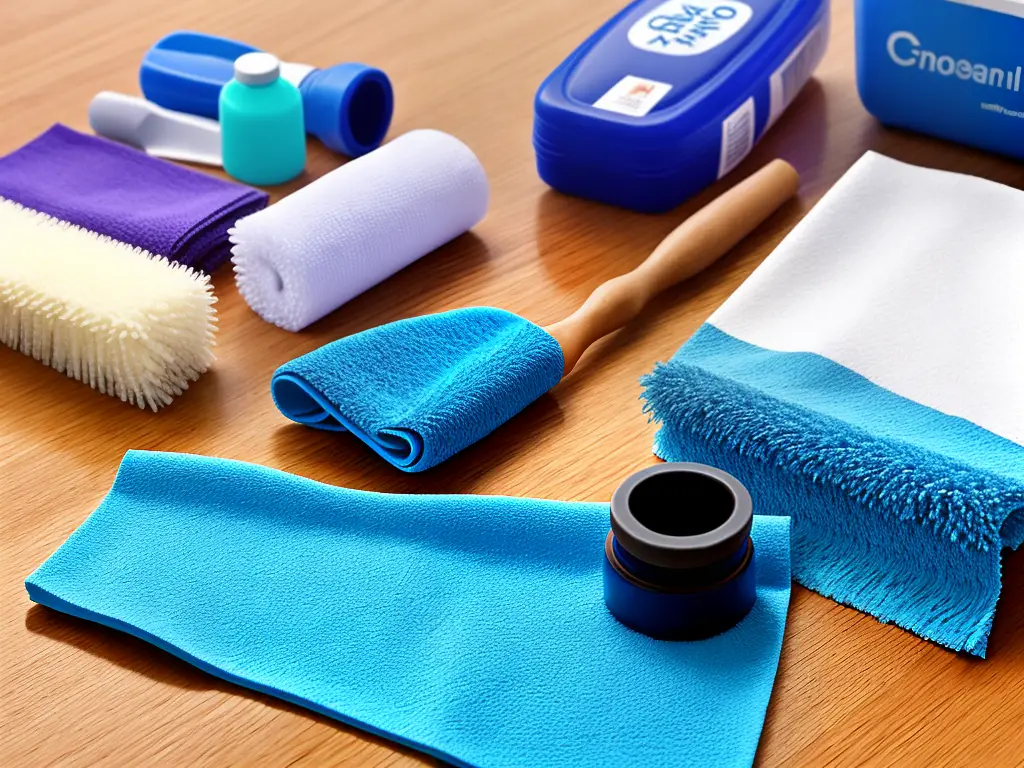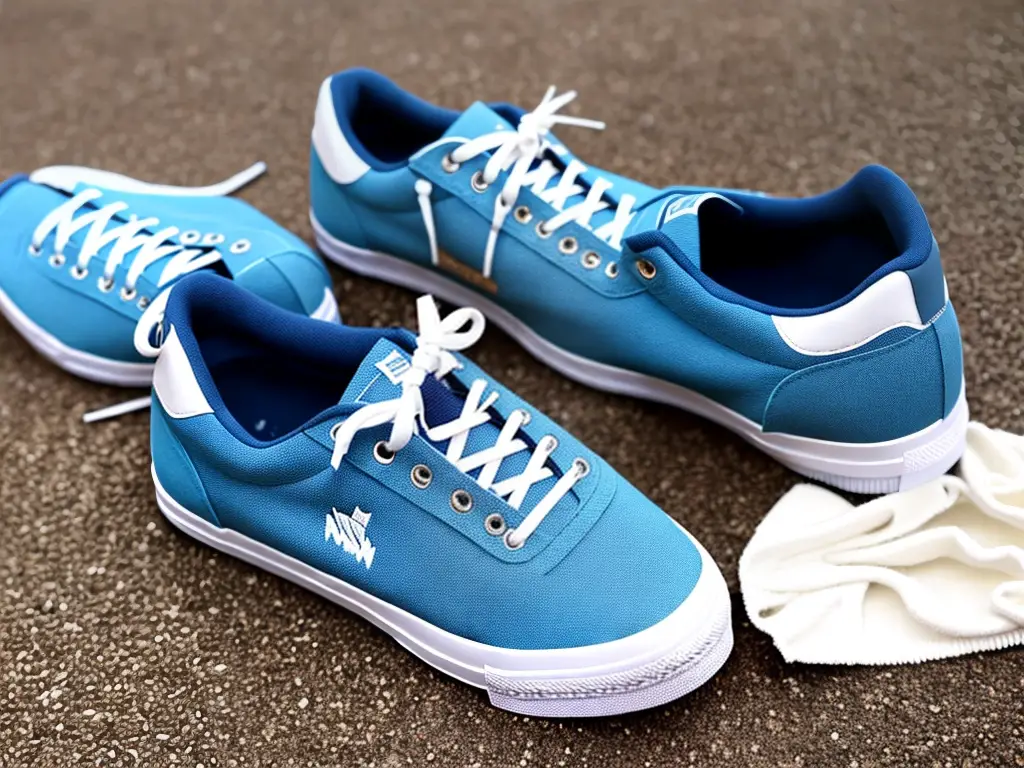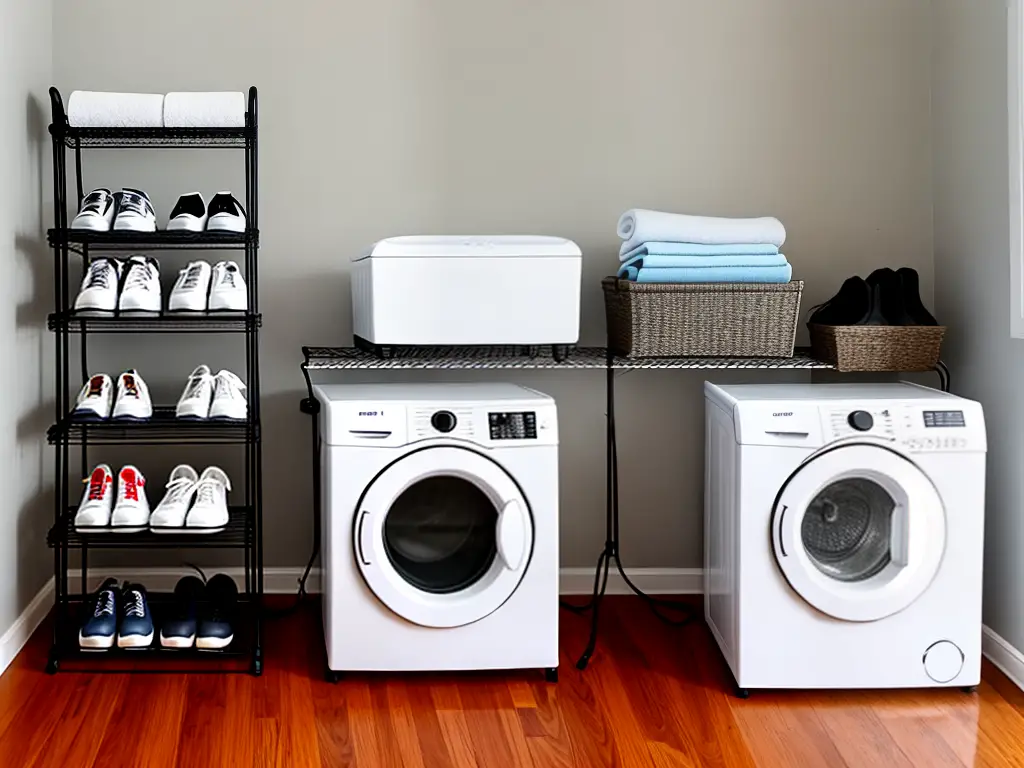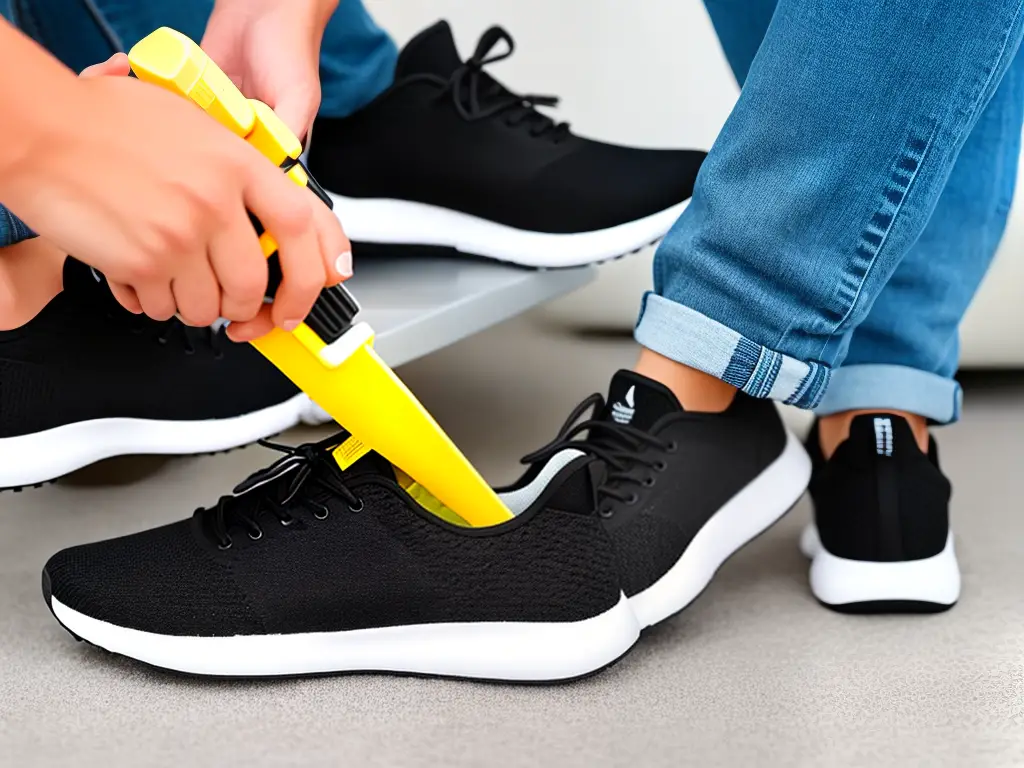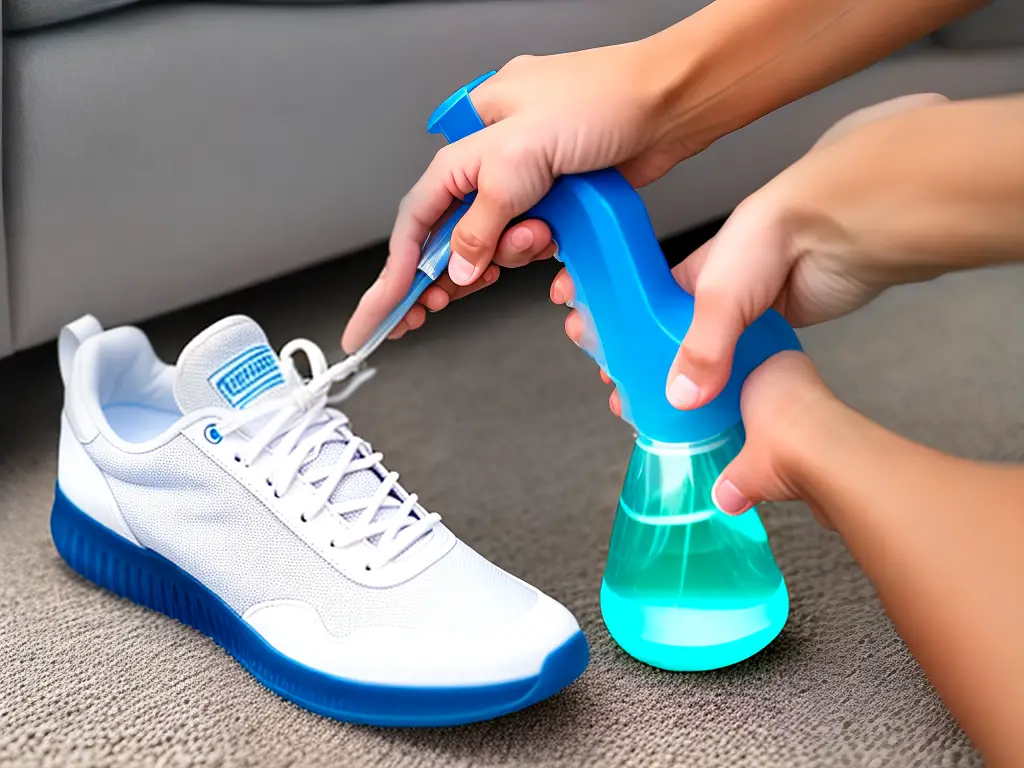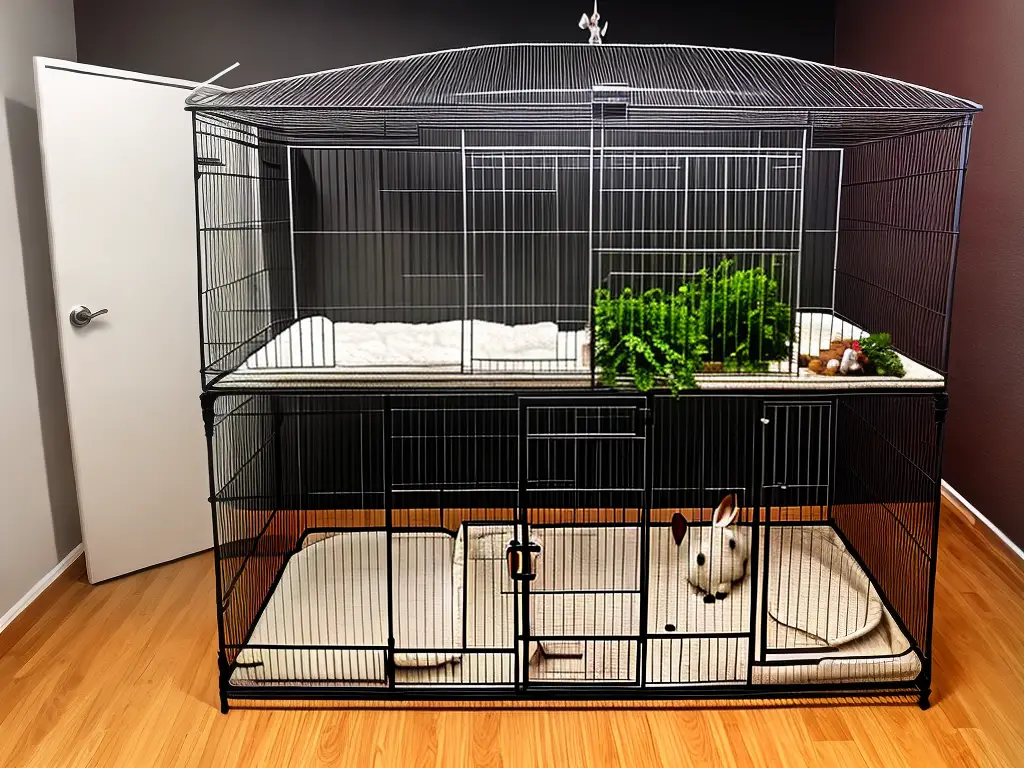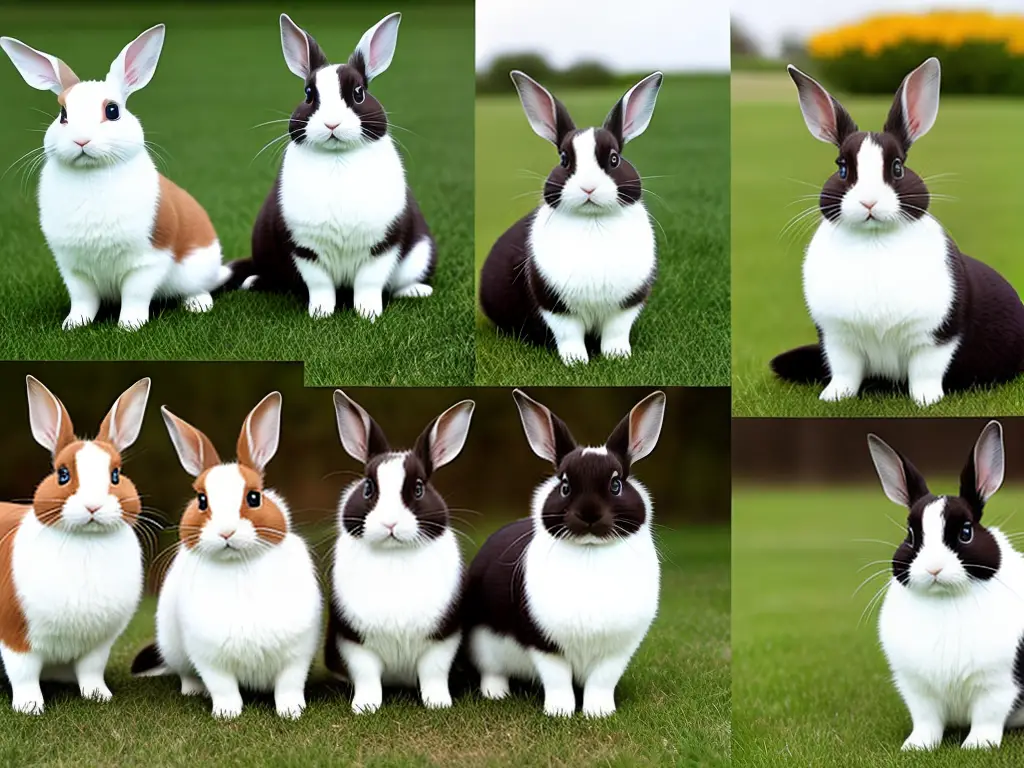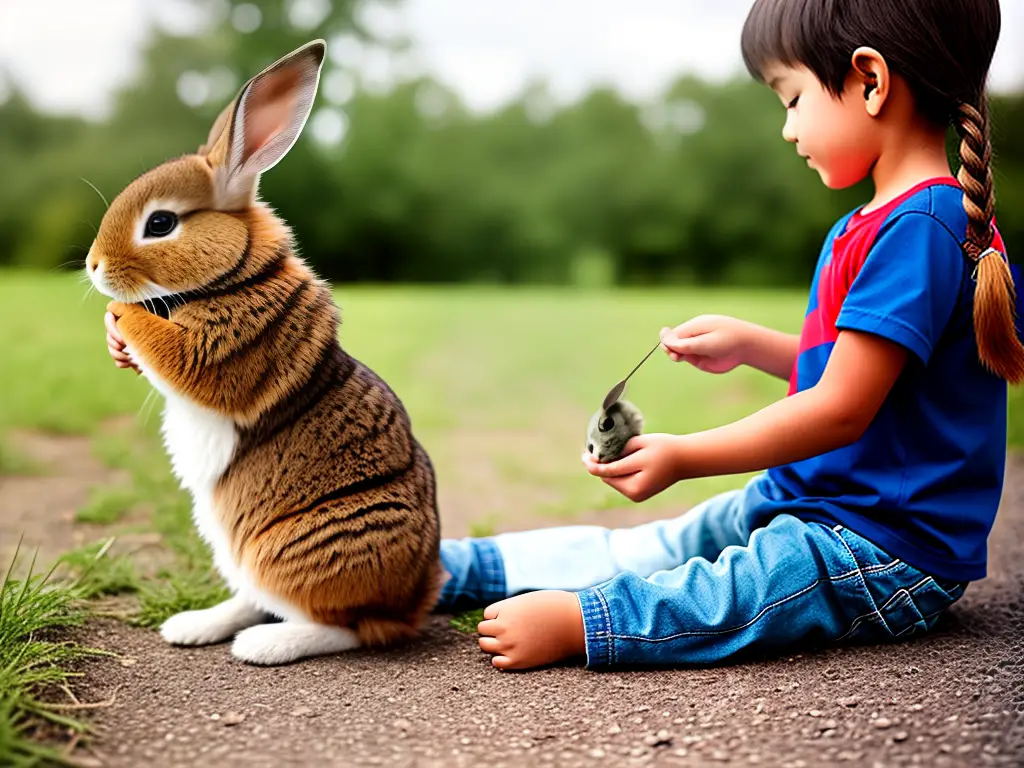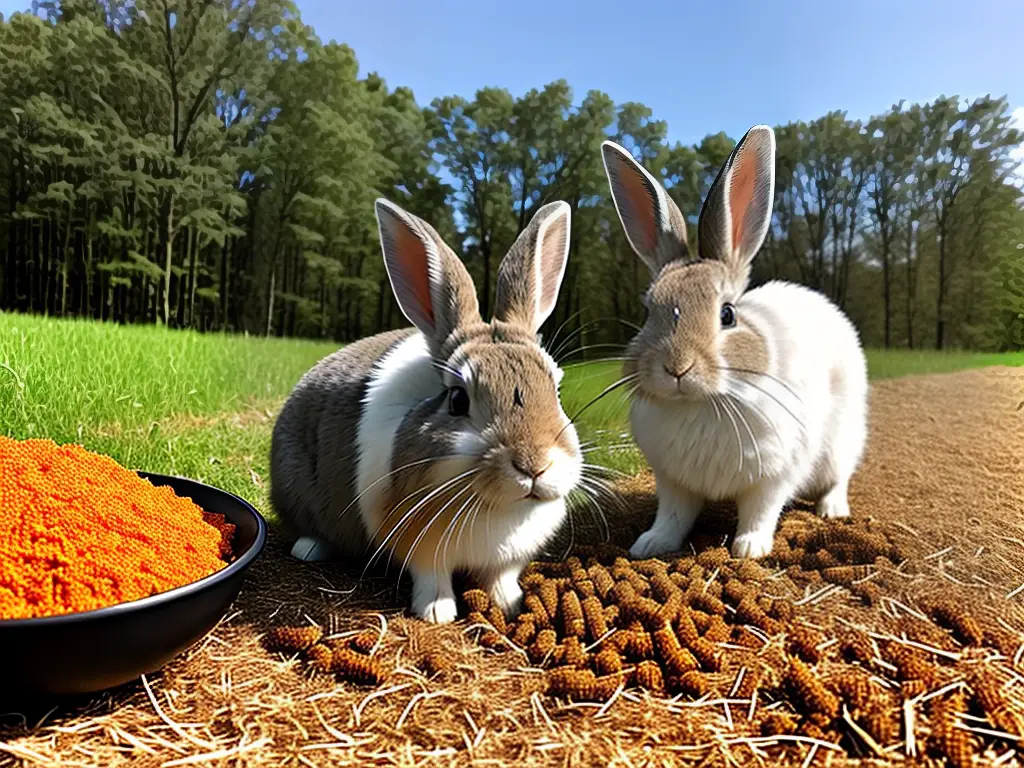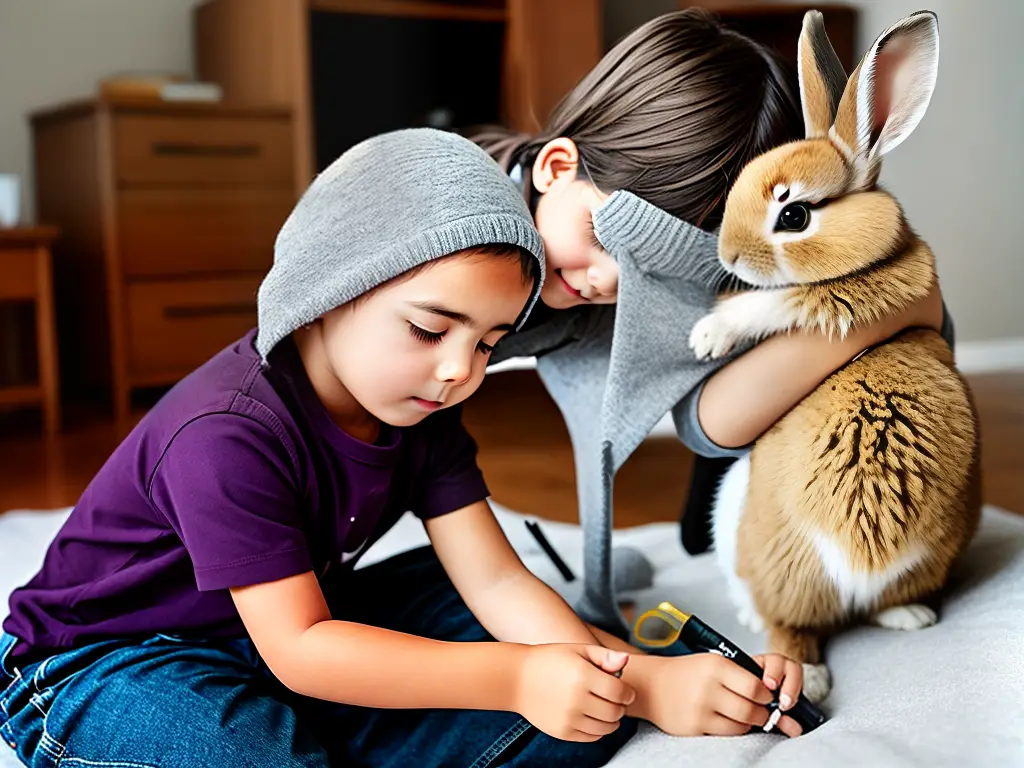When it comes to making a lasting impression, clean and well-maintained sneakers can be of utmost importance. In order to keep your treasured kicks looking fresh and in great condition, it’s essential to understand the various cleaning techniques, methods, and sneaker materials. This guide dives into an exploration of sneaker materials such as leather, suede, canvas, and synthetic materials, as well as the importance of proper cleaning techniques, odor control, lace care, drying methods, and much more. By the end of this journey, you will be equipped with the knowledge and skills to confidently care for, maintain, and extend the life of your sneakers.
How to Clean Different Types of Sneakers
One of the essential factors in understanding how to clean sneakers properly is recognizing the various materials that make up your shoes. Typically, sneakers are made of leather, suede, canvas, and synthetic materials, each requiring a different cleaning approach. Knowing how to clean these materials effectively will not only make your sneakers look fresh and new but also ensure their longevity.
Cleaning Leather Sneakers
Leather sneakers are known for their durability and sophisticated appearance. To maintain their condition, using a soft cloth or a soft brush is recommended. Dampen the cloth or brush with water and mild soap, gently clean the surface, and wipe off any excess moisture. Avoid using harsh chemicals or soaking the leather as it can strip the material of vital oils and cause damage. After cleaning it, apply a leather conditioner to keep your sneakers supple and maintain their natural shine.
Cleaning Suede Sneakers
Suede sneakers are highly delicate and require special care when cleaning. To remove dirt and stains from suede shoes, use a soft suede brush or eraser, rubbing gently across the stained areas. It is crucial not to use water in the cleaning process as this can destroy the nap, the fine hair-like fibers that give suede its unique texture. For deeper cleaning, it is prudent to use specialized suede cleaners available in the market.
Cleaning Canvas Sneakers
Canvas sneakers are popular for their lightweight and breathable nature, making them ideal for casual wear. Cleaning these sneakers generally involves using a mixture of mild detergent and lukewarm water. Apply the solution to a brush or cloth and gently scrub the fabric, focusing on heavily soiled or stained areas. Rinse off any residue using a clean, damp cloth or sponge. Air dry your canvas sneakers; avoid placing them near a direct heat source or in the dryer, as this can cause the canvas to shrink or warp.
Cleaning Synthetic Material Sneakers
Synthetic materials like mesh, rubber, and synthetic leather are common in athletic sneakers, providing increased flexibility and support. Cleaning these materials often entails using a mixture of mild dish soap and warm water. Apply the solution to a soft cloth or brush and gently scrub the surfaces of the sneakers, paying extra attention to any stained areas. Rinse thoroughly with a clean, damp cloth or sponge, and air dry. Lubricating the zippers (if any) after cleaning with a silicone spray will help maintain smooth functionality.
Understanding sneaker materials is crucial for their proper care, maintenance, and cleaning. Whether they are leather, suede, canvas, or synthetic, applying the right cleaning techniques for each material will ensure your sneakers look fantastic and last longer. Select the appropriate cleaning products and methods for every type of material, and enjoy fresh, clean, and comfortable sneakers each time you wear them.

Basic Cleaning Techniques for Sneakers
Employing basic cleaning techniques, such as spot cleaning, is essential for keeping your sneakers looking fresh and well-maintained. Spot cleaning involves using a damp cloth or soft brush to remove dirt and stains from targeted areas. A mild soap solution coupled with a soft toothbrush or sponge works wonders for breaking down stubborn marks without causing damage. Gently rub the stained area in a circular motion until the stain lifts, and then allow the shoes to air dry. For especially tough stains like oil or grease, try sprinkling some cornstarch on the affected area overnight to absorb the grime, making it easier to clean later.
Washing sneakers may be necessary for a more thorough cleaning, particularly if your shoes have accumulated layers of dirt or have developed an unpleasant odor. Be sure to read the care label on your shoes to verify whether they can be machine washed or should be washed by hand. When machine washing sneakers, it is best to use a gentle cycle with cold water and a mild detergent. Placing the shoes in a mesh laundry bag can provide extra protection, and it’s advised to remove the laces and insoles before washing to ensure a more even clean.
Hand cleaning is another valuable technique for delicately cleansing your sneakers without causing any damage. Fill a bucket or basin with cool water and a small amount of mild detergent, removing any excess suds to avoid leaving residues on your shoes. Submerge your shoes in the soapy water and gently scrub them with a soft brush or cloth, focusing on particularly dirty areas. Drain the dirty water and rinse the shoes with clean water, gently squeezing out any excess moisture before leaving them to air dry.
Selecting the right tools and cleaning products is crucial for effective sneaker maintenance. Gentle materials such as microfiber cloths or sponges, soft toothbrushes, and mild soaps are ideal for most cleaning tasks. For stubborn stains and dirt buildup, it’s worth investing in specially-formulated sneaker cleaners that are designed to work on various materials without causing damage. Additionally, using a clean toothbrush to clean the hard-to-reach areas such as soles and crevices can ensure your shoes look their best.
In order to keep your sneakers looking their best, it’s important to understand the proper cleaning techniques, particularly for delicate materials like suede or leather. These materials can be ruined or discolored by water, so you should use a dry brush or specialized cleaning products designed specifically for these fabrics. Always test a small, inconspicuous area of the shoe with any cleaning solution before using it on the entire surface to ensure it won’t cause any discoloration or damage. By becoming informed about the appropriate methods for cleaning and caring for your sneakers, you can prolong their lifespan while keeping them in pristine condition.
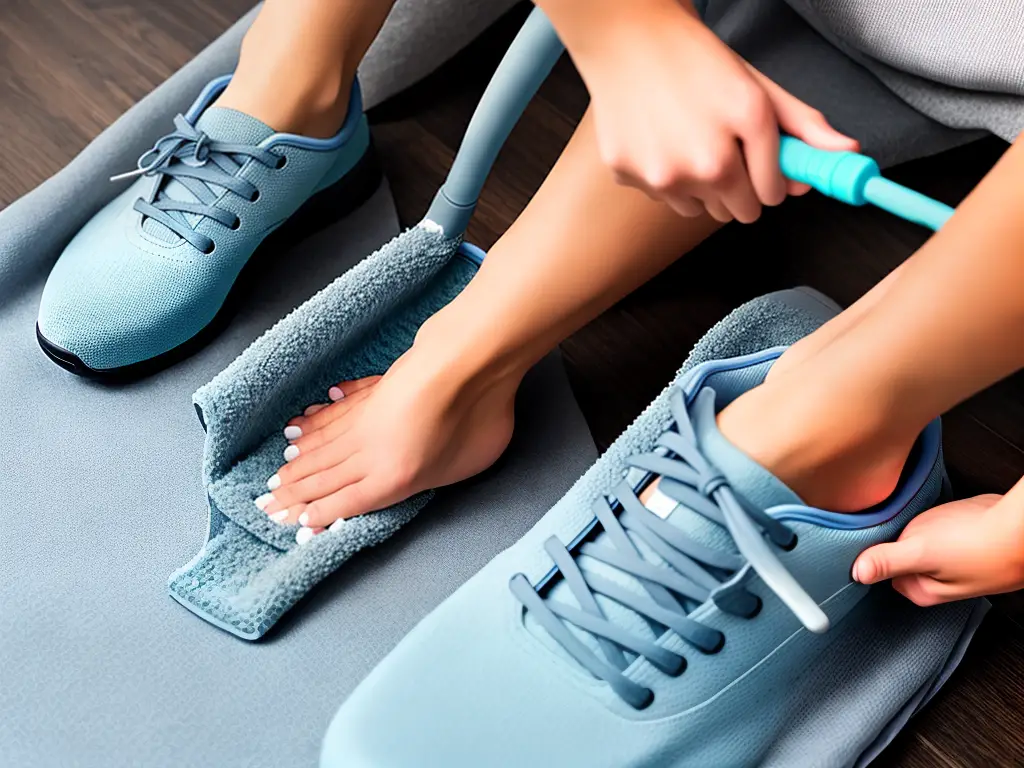
Effective Techniques for Deep Cleaning Your Sneakers
Deep cleaning sneakers, especially for stubborn dirt and stains, requires a combination of specialized products and techniques. One effective method involves using a sneaker cleaning solution, which is specifically formulated to break down dirt without harming the shoe’s material. These solutions, more potent than regular soap or detergent, can be found at most sneaker stores and online retailers. To utilize the cleaning solution, mix it with water according to the instructions on the bottle and gently scrub the sneakers with a soft brush or cloth. By incorporating these cleaning practices, you’ll be able to maintain your sneakers’ cleanliness and appearance without causing any damage.
Another effective method is to use a powerful laundry detergent. Mix a small amount of detergent with water and scrub the sneakers, followed by rinsing with cold water. It is important to note that this method may not work for all types of sneakers and may cause colors to fade or delicate materials to be damaged.
For those who prefer a gentler approach, using a steam cleaner is a great technique for deep cleaning sneakers. Steam cleaners use hot water vapor to penetrate and break down dirt, stains, and odors. Clean your sneakers using the steam cleaner according to the manufacturer’s instructions, taking care to avoid direct contact between the nozzle and the material of the shoe. Use a microfiber cloth to wipe sneakers down afterwards.
Ultrasonic cleaning is another advanced technique that uses sound waves to create microscopic bubbles in a solution to remove dirt and stains. Ultrasonic cleaners can be found online or at specialty stores. To use this method, fill the machine with water (and cleaning solution if recommended) and place the sneakers inside, ensuring they are fully submerged. Run the cleaner for the recommended amount of time.
Maintaining a regular cleaning routine for your sneakers is essential to prevent the buildup of dirt, stains, and odor. Wipe down your sneakers after each use and deep clean periodically, using one or more of the methods outlined above. Proper sneaker care can keep them looking fresh and clean for years to come.
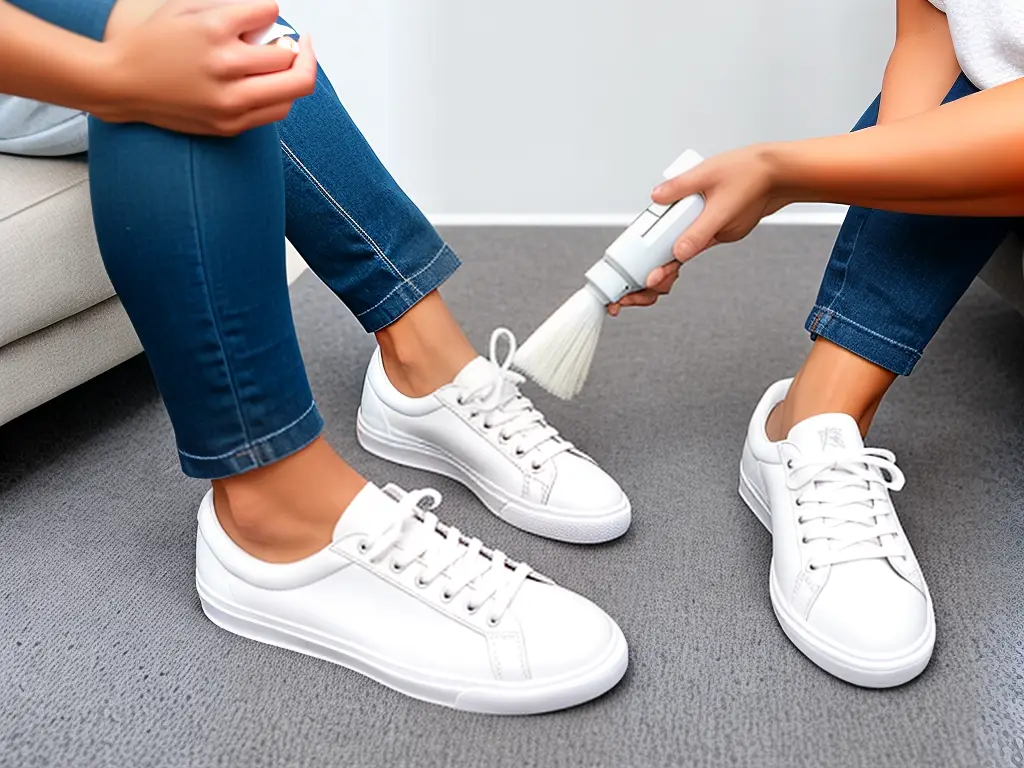
Maintaining Freshness and Odor Control in Your Sneakers
One critical aspect of keeping your sneakers in good condition is ensuring the freshness and odor control of the insoles. Insoles tend to be the prime location of bacteria and odor-causing agents, as they are in direct contact with the foot’s moisture and sweat throughout the day.
Regularly cleaning by removing the insoles from the sneakers and gently scrubbing them with soapy water can help keep them fresh. Follow this up by thorough rinsing and air drying. Deodorizing sprays or powders may also be used to control odors if used regularly. By taking these steps, you can ensure your sneakers remain clean and fresh for their entire lifespan.
Good personal hygiene is another key factor in maintaining freshness and odor control in sneakers. Regularly washing your feet with antibacterial soap, keeping your toenails clean and trimmed, and changing socks daily will significantly reduce the accumulation of bacteria and subsequent odors in your sneakers. It’s also a good idea to let your sneakers air out after each wear, as this will allow any trapped moisture to evaporate, thereby minimizing the growth of odor-causing bacteria.
Using odor-absorbing products such as activated charcoal bags, cedarwood shoe inserts, or odor-absorbing balls can help control and eliminate unpleasant smells in your sneakers. These products work by absorbing moisture and neutralizing odors, creating a fresher environment within the shoe. Ideally, these odor-controlling products should be used in conjunction with regular insole cleaning and good personal hygiene practices.
In addition to these odor control methods, it’s essential never to wear your sneakers while they’re still damp from a previous wear or cleaning. Damp shoes are the perfect breeding ground for bacteria and mold, which will ultimately lead to unpleasant smells and potential damage to the shoe’s internal structure. Always ensure your sneakers are thoroughly air-dried before wearing them again or using any odor-absorbing products mentioned earlier.
Keeping your sneakers fresh and odor-free requires a combination of proper hygiene practices, insole cleaning, and shoe rotation. By alternating between different pairs of shoes, you allow them to air out and dry completely after each wear, while also reducing the stress placed on each pair, prolonging their lifespan. In addition to this, proper storage, such as using a well-ventilated area or a shoe rack, can significantly contribute to maintaining your sneakers’ freshness and minimizing unpleasant odors.

Maintaining Sneaker Laces
A key yet often-overlooked aspect of sneaker maintenance is the care of your sneaker laces. As these laces are regularly subject to dirt and stains, cleaning and maintaining them on a regular basis not only improves the overall appearance of your sneakers but also further extends their lifespan. To ensure the best possible care for your sneaker laces, there are a variety of methods available for cleaning, maintaining, and replacing them, each featuring their own unique set of advantages and potential drawbacks.
Cleaning Sneaker Laces:
-
A simple yet effective way to clean your sneaker laces is by using a mixture of warm water and mild detergent. Remove the laces from your sneakers and let them soak in this mixture for a few minutes. This will help to loosen dirt and grime particles.
-
After soaking, use your fingers to gently rub the laces, and then rinse them thoroughly with clean water. To dry the laces, simply squeeze out the excess water and lay them flat on a clean towel. Avoid exposing the laces to direct sunlight, as this can cause discoloration or damage.
-
For a deeper cleaning, you can opt to wash your sneaker laces in the washing machine. To protect the laces from tangling with other garments or becoming damaged, place them in a mesh laundry bag before adding them to the wash. Use a mild detergent and select a gentle cycle for the best results. Just as with handwashing, it’s important to dry the laces away from direct sunlight.
Replacing Sneaker Laces:
-
In some cases, replacing your sneaker laces may be the best option to improve the overall appearance and cleanliness of your sneakers. Purchase new laces in a color that complements your sneakers and swap them out whenever the old laces appear worn or heavily soiled. It is worth noting that investing in high-quality laces can extend the life of your sneakers by ensuring that they remain securely fastened and supported.
Storing Sneakers:
-
Lastly, storing your sneakers properly can help maintain the cleanliness of your sneaker laces. Avoid placing your sneakers in an overcrowded or dirty storage environment, as this can cause the laces to come into contact with dust or other contaminants. When traveling or carrying an extra pair of sneakers, use a dedicated shoe bag to keep the laces clean and free from damage. In turn, your efforts to clean, maintain, and replace your sneaker laces will contribute positively to the overall cleanliness and longevity of your sneakers.
In addition to careful storage, another essential aspect to keep in mind when cleaning sneakers is the drying process.
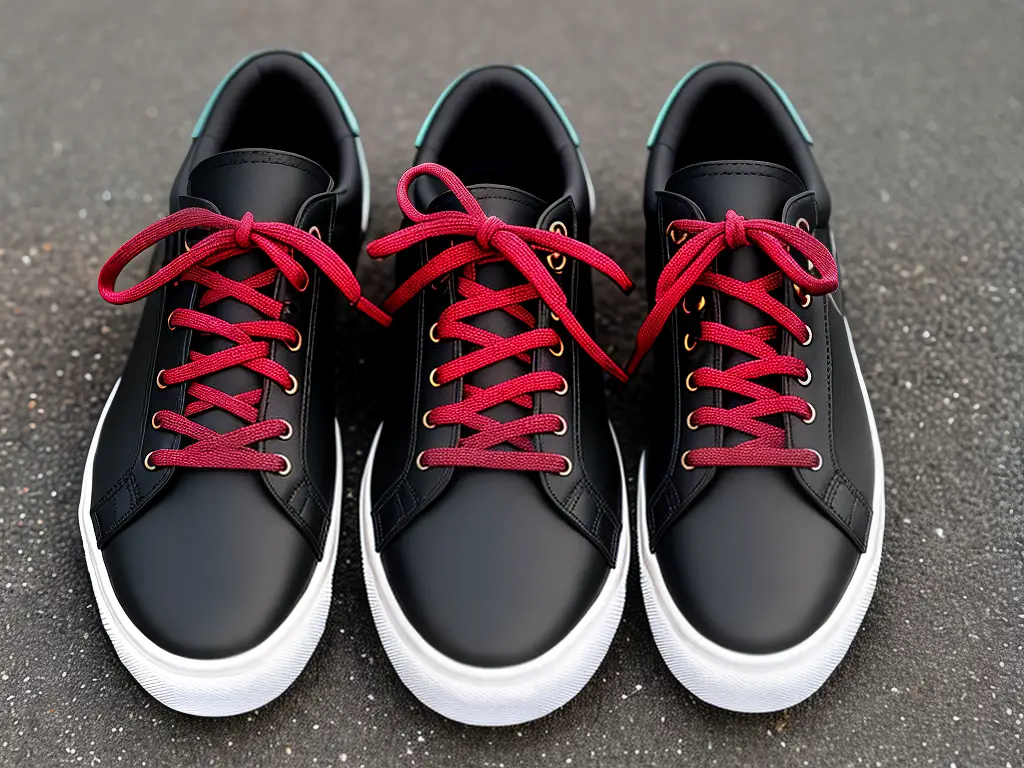
Methods for Drying Sneakers
Ensuring that your sneakers are dried properly after washing is crucial to prevent potential damage, shrinkage, and loss of shape or comfort. There are several methods for drying sneakers, each with their advantages and disadvantages – the best choice will depend on the type of sneakers, materials used, and personal preference. By following appropriate storage and drying practices, you can prolong the life of your sneakers and maintain their overall appearance and condition.
Air Drying
A common technique for drying sneakers is by air drying. This method allows the shoes to dry naturally and minimizes the risk of damage from direct heat. To air dry your sneakers, first, remove the insoles and laces, as doing so will allow for better airflow and faster drying. Next, stuff your sneakers with a material that can absorb moisture, such as paper towels or newspaper, to help them maintain their shape and soak up any excess water. Be sure to place the sneakers in a well-ventilated area, away from direct sunlight or heat sources, as these can cause color fading or material damage. This method may take longer compared to other drying techniques, but it is the gentlest way of drying your shoes.
Using a Fan
If you require a quicker drying method, using a fan is an excellent alternative, especially when dealing with shoes constructed from more delicate materials or those that are unable to withstand heat. Position your sneakers in front of a fan, ensuring that they are at a reasonable distance and angle for consistent airflow throughout. Be cautious not to set the fan speed too high, as this can cause the shoes to lose their shape.
Specialized Shoe Drying Device
Alternatively, utilizing a specialized shoe drying device can be a highly effective method for thoroughly drying sneakers. These devices are specifically designed to dry various types of footwear and often have adjustable settings to accommodate different shoe materials, allowing for a tailored drying experience. Some models even have the capability to deodorize and sanitize, providing additional benefits beyond just drying your shoes. Although these devices may have a higher initial cost, they can be a worthwhile investment, especially for those who regularly need to clean and dry sneakers.
Clothes Dryer
In instances when you may not have access to a shoe dryer or fan, using a clothes dryer can serve as another method for drying sneakers. However, it is crucial to note that this technique could potentially damage both your sneakers and the dryer, so it should only be used as a last resort. If opting to use a clothes dryer, first ensure that your sneakers can withstand the heat and tumbling motion. Fasten your sneakers inside a pillowcase or use a specialized shoe drying rack, if available, to protect both the shoes and the dryer. Lastly, select the lowest heat setting on your dryer and limit the drying time to reduce the risk of damaging your shoes. Always closely monitor your shoes while using this method to prevent any potential adverse effects.
There are various techniques to clean and dry sneakers, with each method being better suited to different situations or materials. The proper approach will depend on the type of sneaker and individual preference, but remember that preserving the shoes’ integrity should always be the priority when selecting a cleaning and drying technique.
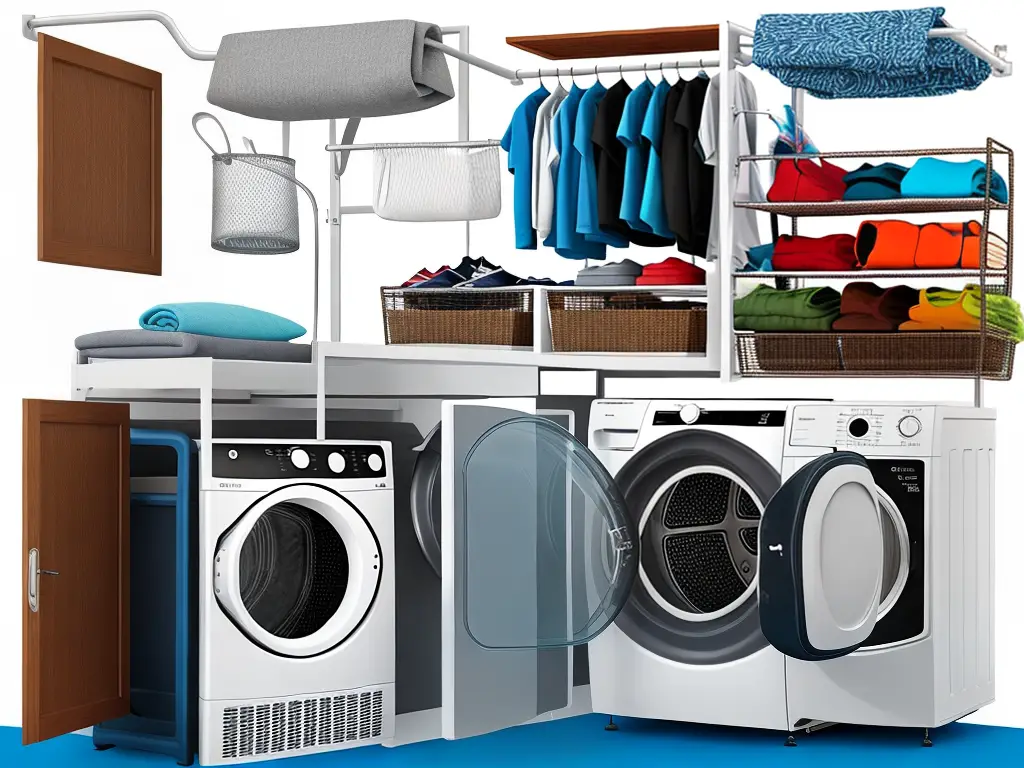
Restoring Sneakers to Their Original Condition
Restoring sneakers to their original condition often starts with addressing any scuffs, scratches, or color fading on the shoe’s surface. Begin by using a sneaker cleaner or mild soap mixed with warm water to clean the affected area. Gently scrub with a brush or cloth to remove dirt and grime. If the scuffs or scratches remain, you can use white toothpaste or a baking soda paste to gently scrub the area. Be sure to test any cleaning solution on a small hidden area of the shoe before applying it to the entire surface to ensure it won’t cause any further damage. Once cleaned, choose a suitable drying technique based on the sneaker’s material and personal preference to keep the shoes in pristine condition.
Color fading is another issue sneaker enthusiasts often face when restoring their shoes. To address color fading, you can purchase sneaker paint or dye specifically designed to match the original color of your shoes. If you’re unsure about the correct shade of paint or dye to use, try inquiring at a shoe store or sneaker specialty shop for advice. When applying the paint, use a fine brush and apply thin, even layers, allowing each layer to dry before applying the next. This will help prevent any accidental streaking or uneven application.
For severely damaged sneakers or those with great sentimental value, it might be worth investing in professional sneaker restoration services. Many sneaker restoration experts offer services such as color matching, regluing soles, and even re-stitching torn seams, making your shoes look brand new. Professional services may also be more experienced in handling rare or valuable sneakers, making them the ideal choice in such situations.
It’s important to note that not all sneakers can be fully restored or repaired. In some cases, the damage may be too extensive or the materials may have deteriorated beyond repair. Before investing time and money into restoring your sneakers, consider whether it’s worth the effort or if it might be more practical to purchase a new pair instead. However, responsibly disposing of or donating your old sneakers is always better than sending them to a landfill.
In conclusion, restoring and repairing sneakers can be a fulfilling project if you’re passionate about maintaining the lifespan of your favorite shoes. Through simple techniques like cleaning and touch-ups or investing in professional restoration services for more severe damage, you can breathe new life into your sneakers and keep them looking fresh for years to come. Before diving into these techniques, however, it’s essential to practice proper daily care and maintenance to help ensure your sneakers remain in the best possible condition.
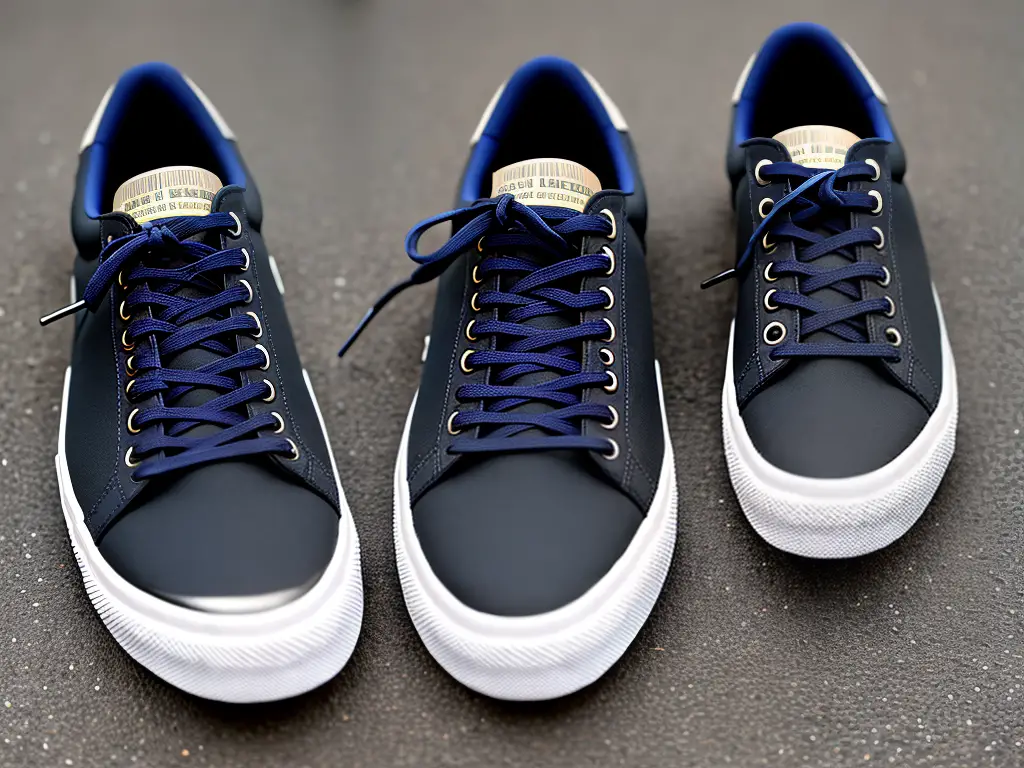
How to Properly Care for Sneakers
To keep sneakers clean and fresh, one vital element is selecting suitable socks to wear with your shoes. Opting for high-quality moisture-wicking socks can help prevent unpleasant odors and keep your sneakers dry. Also, be sure to change your socks daily to avoid bacterial buildup inside your shoes. Dirty, sweaty socks can cause your sneakers to smell and harbor bacteria, so clean socks are a must in maintaining good hygiene. By practicing this daily care, you will be better prepared to tackle more extensive restoration projects when needed, ensuring your sneaker’s longevity.
Another key factor in taking care of sneakers is rotating your shoes. Wearing the same pair every day can lead to rapid wear and tear, while also giving bacteria little chance to dissipate. A good rule of thumb is to maintain at least two or three pairs of sneakers that you can alternate, allowing each pair a day or two to air out and helping your shoes last longer. This rotation method also helps to reduce pressure on the shoe’s cushioning, maintaining its overall structure and integrity.
Proper storage habits are also important in the upkeep of sneakers. When not in use, sneakers should be stored in a cool, dry place, away from direct sunlight, which can cause discoloration and damage to fabrics. Additionally, using a shoe tree or shoe shaper can help maintain the sneaker’s shape and prevent creasing, while also allowing air to circulate inside the shoe. However, be sure to avoid using heat sources like heaters or radiators to dry sneakers, as the high temperatures can damage glue, materials, and overall shoe structure.
Cleaning your sneakers regularly is also crucial to maintaining their appearance and longevity. Remove dirt or stains promptly to prevent them from setting into the fabric. For everyday cleaning, you can use a soft brush or cloth, a mild soap or detergent, and some water. Gently brush away dirt and wipe with a damp cloth to remove surface stains. For tougher stains or deep cleaning, consider using a specialized sneaker cleaning solution and a soft-bristle brush, followed by rinsing with cool water and air drying.
It’s also important to take action against odor-causing bacteria in your sneakers. One effective method is to use deodorizing shoe inserts, which help absorb moisture and neutralize odors. Alternatively, you can sprinkle baking soda inside your shoes and let them sit overnight. In the morning, shake out the excess powder, and your sneakers will smell fresher. By consistently putting into practice these preventative care and maintenance tips, you can keep your sneakers looking and smelling their best for a longer time.
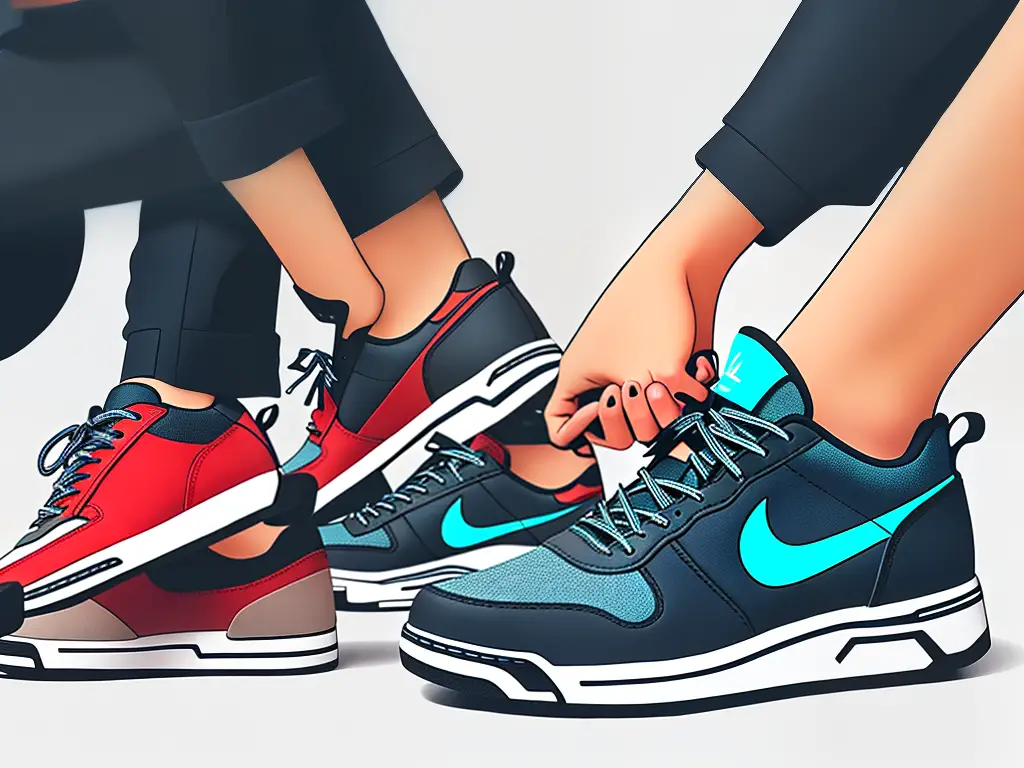
As we have seen, maintaining the cleanliness and freshness of your sneakers is not only crucial to making a positive impression, but also extends the life of your beloved footwear. By implementing the cleaning techniques, deep cleaning strategies, and preventative care measures, you can ensure your sneakers remain in pristine condition for years to come. Proper care also involves restoration and repair when necessary or utilizing professional services when needed. With these comprehensive tips and techniques in mind, you can stride confidently through life knowing that your sneakers are putting their best foot forward.

